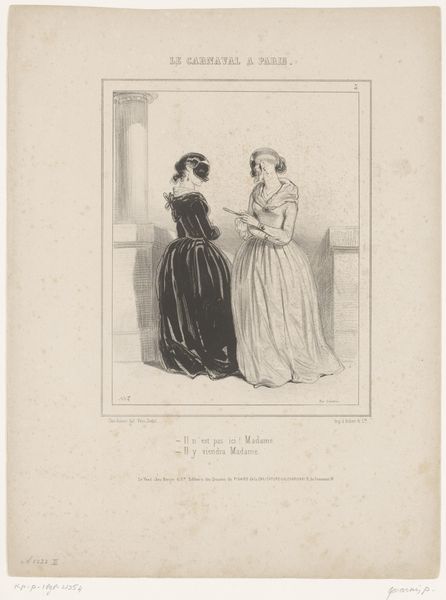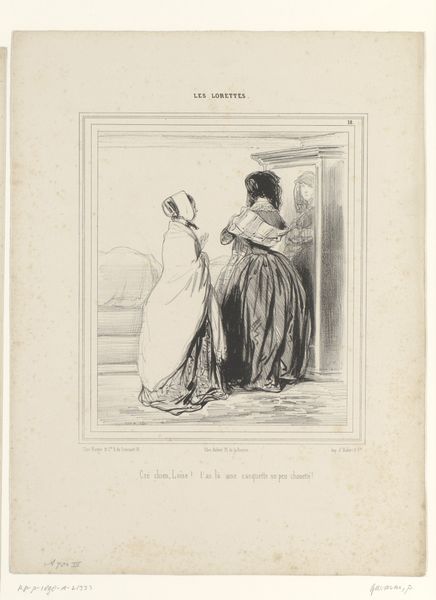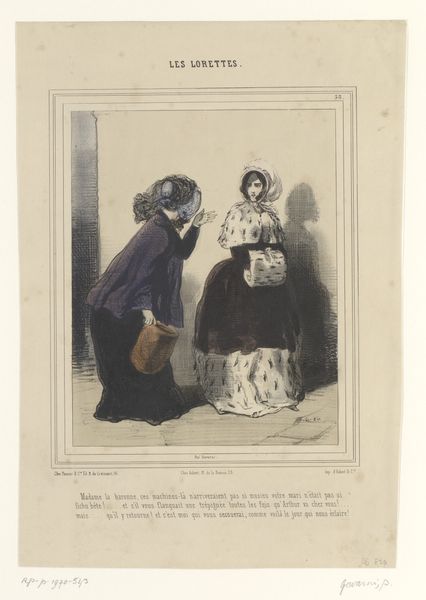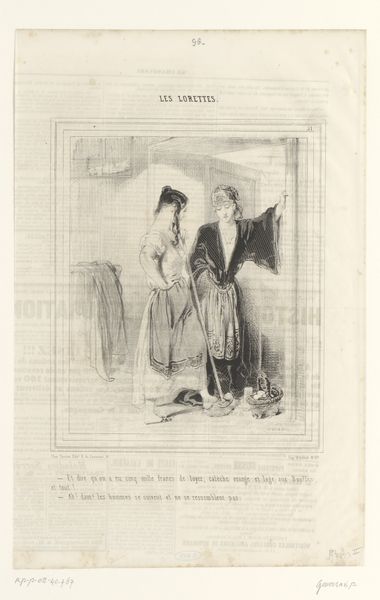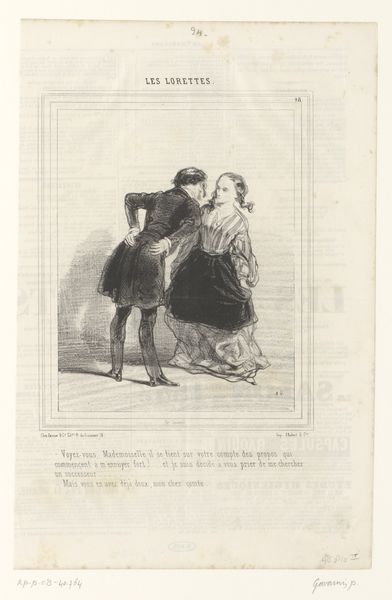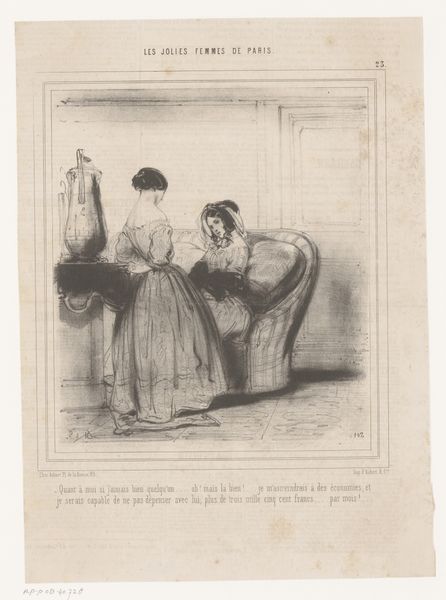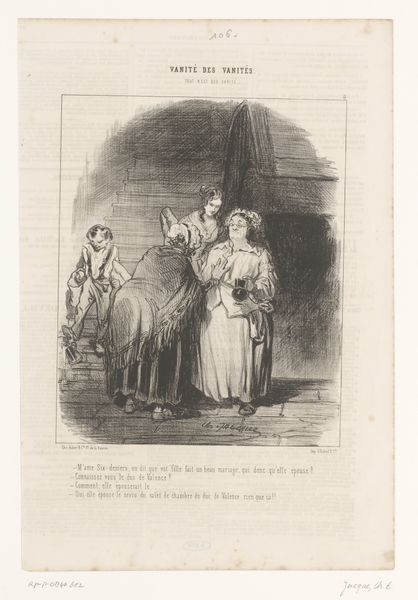
drawing, lithograph, print, etching, paper
#
portrait
#
drawing
#
lithograph
# print
#
etching
#
figuration
#
paper
#
romanticism
#
genre-painting
Dimensions: height 355 mm, width 268 mm
Copyright: Rijks Museum: Open Domain
Editor: So, this is "Vrouw spreekt andere vrouw thuis," or "Woman speaking to another woman at home," by Paul Gavarni, from 1841. It's a lithograph, etching, and drawing on paper, currently held at the Rijksmuseum. What strikes me is the contrast in dress between the women – one looks very domestic, and the other quite elaborate. What do you make of it? Curator: It's precisely that contrast that makes it so compelling. Gavarni was a keen observer of Parisian society, particularly the lives of women. Consider the context: 1840s Paris was experiencing rapid social and economic changes, which affected gender roles. What we might be seeing is a commentary on class divisions and the limited opportunities available to women at the time. The woman in simpler dress could be a domestic worker, and the other… who might she be? How do their dresses reflect their status? Editor: Perhaps a kept woman, a "Lorette," as the print seems to suggest. The clothing does hint at those power dynamics – almost as if one woman possesses a degree of control over the other's labor or existence. Curator: Exactly! And isn’t that a commentary on the socio-economic landscape, where a woman’s worth was so often tied to her appearance and her relationships with men? Consider also the gaze; how are they looking at each other? What are they *not* saying? And does Gavarni's print implicitly critique or normalize this social reality? Editor: It makes you wonder about the nuances of their conversation. Thanks – that gives me a lot to consider. Curator: My pleasure. Thinking about art as a reflection of the societal power structures really helps us to understand our own perspectives, doesn’t it?
Comments
No comments
Be the first to comment and join the conversation on the ultimate creative platform.
